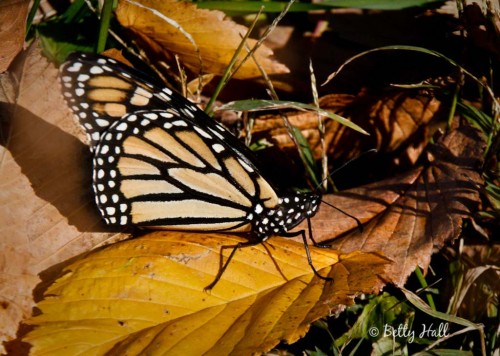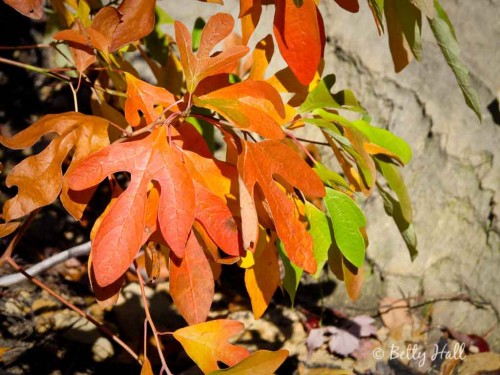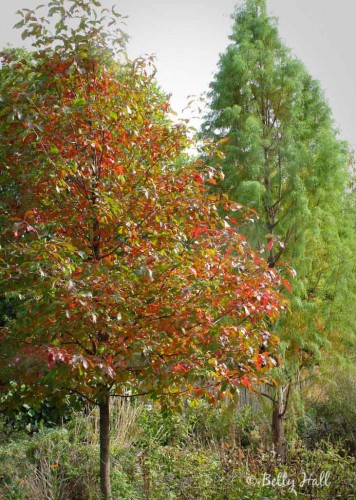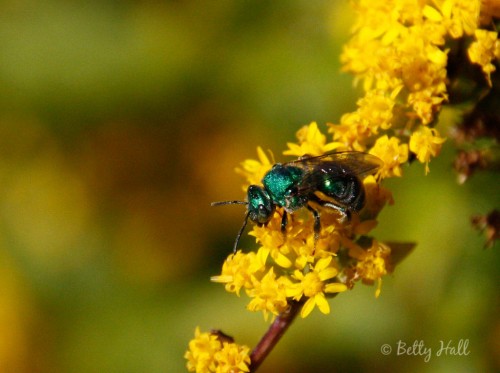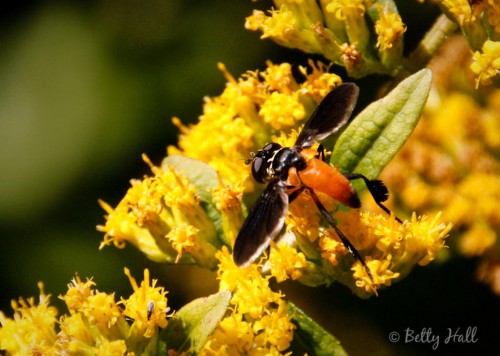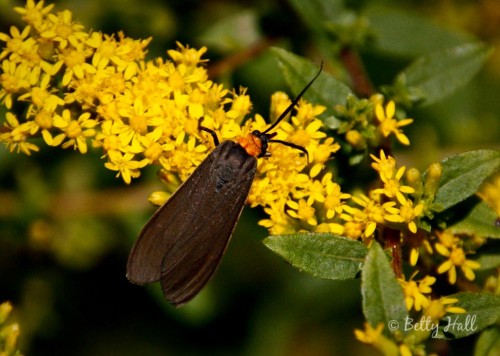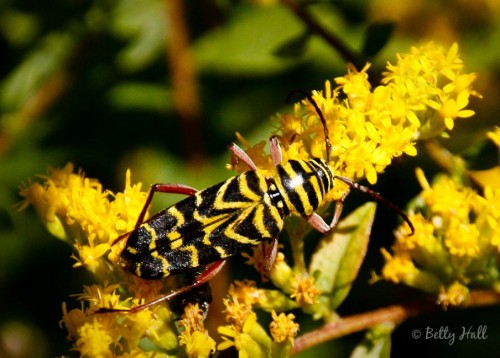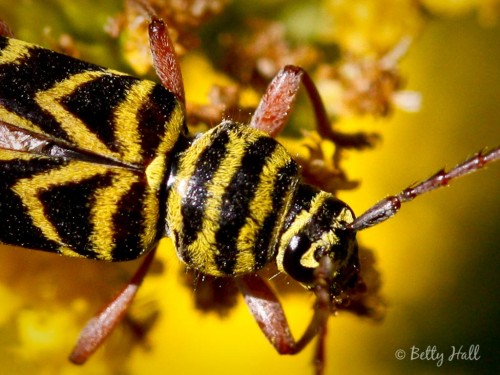I was surprised last week when I saw a Monarch butterfly (Danaus plexippus) in the backyard. And on Sunday, I saw this one sunning on the ground at The Arboretum.
Blog
Fall colors – part 2
Harry and I recently hiked in the Red River Gorge in Eastern Kentucky to enjoy the fall color. Trees were creating the biggest splashes, however shrubs and low-growing trees were also adding to the color and bringing it closer to eye level.
Sassafras (Sassafras albidum) was abundant with its colorful mitten-shaped leaves.
Fall colors
The leaves of our Black Gum (Nyssa sylvatica) also known as Black Tupelo, and the Bald Cypress (Taxodium distichum) are signaling a change of seasons.
Intriguing goldenrod visitors – Part 2
I’ve been using the photographs I took recently of the insect show on the Rough-leaved Goldenrod (Solidago rugosa) to try to identify the insects I saw.
I was surprised to discover that what I thought was an iridescent green fly was actually a sweat bee (Augochloropsis metallica).
And this interesting-looking insect is a Feather-legged Fly (Trichopoda pennipes). It doesn’t fit my mental image of a typical fly, and it’s considered a beneficial insect. I’ve not found any information on what function the leg “feathers” serve.
I wouldn’t have guessed this Yellow-collared Scape Moth (Cisseps fulvicollis) was a moth, either. It is apparently widespread over much of the U.S., feeds on flowers by day and is attracted to lights at night.
I’m not sure which is more challenging – getting good insect photographs or identifying the subjects later. I’ve got a lot to learn on both counts, and I look forward to discovering more about all of our backyard visitors – large and small.
What plants, birds, insects, etc., are you noticing in your backyard?
P.S. Click on the images to see a larger view.
Rough-leaved Goldenrod and Black Locust Borer
The Rough-leaved Goldenrod (Solidago rugosa) has been the most popular plant in the backyard recently. The airy, arching stems with yellow blossoms have been a gathering place for a myriad of insects including bees, flies, wasps, and unknowns, all busily feeding on nectar and gathering pollen.
This is one of the insects that got my attention (click images for larger versions).
I checked BugGuide and discovered it’s a Black Locust Borer (Megacyllene robiniae). Adults feed on pollen, particularly from goldenrods. The larvae live on Black Locust trees and can be a pest.
When I cropped an image to get this close-up, I was surprised to see that the body was somewhat fuzzy.
I enjoyed observing all the comings and goings on this goldenrod plant, and I’ve decided watching insects is great fun. There were far too many interesting creatures for one blog and I’ll share more images later.

